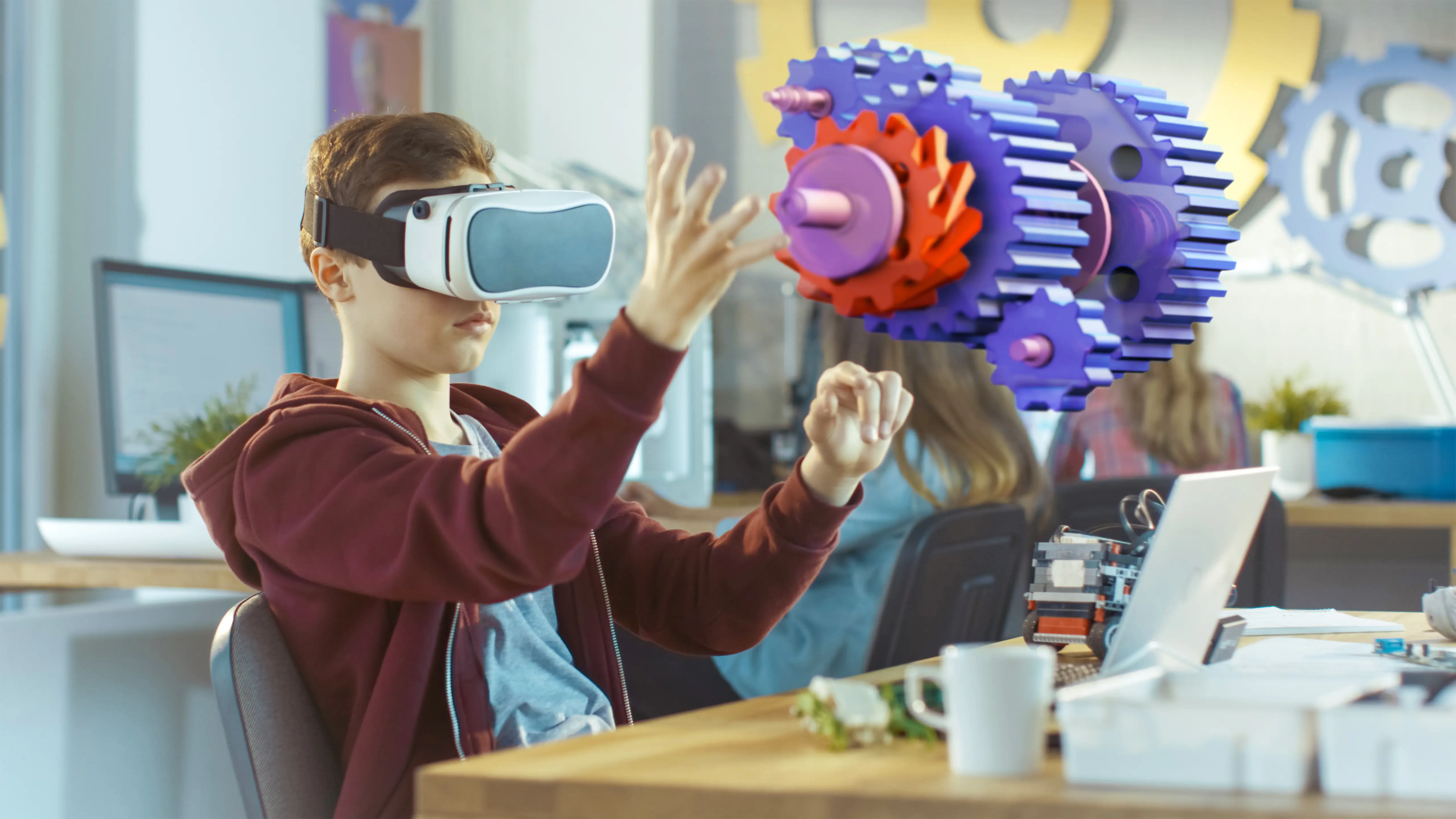
The popularity of eLearning has been growing steadily for over two decades now, but the pandemic gave it a big fillip. eLearning adoption has drastically increased over the last couple of years due to factors such as social distancing norms, lockdowns, and travel restrictions, coupled with the need for immediate upskilling. The global eLearning market is expected to reach almost USD 400 billion by 2026, up from USD 200 billion in 2019, according to a Statista report.
Over the years, eLearning content has evolved considerably with increasing levels of interactivity. In the early 2000s, passive-based (L1) or limited participation-based (L2) content was dominant. Since then, the industry has evolved to a point where students can collaborate and have full control over their learning journey (L4). At the same time, 3D technology in education has introduced a new level of interactivity and fun – drastically enriching the learning experience.
The concept of 3D has been out there for decades. Most of us have likely experienced the magic of 3D in our personal lives, while watching our favorite movies in 3D at the cinemas or examining a 3D rendering of a house yet to be built. And of course, how can we forget popular video games that provided a 3D environment!
3D Technology for Improved Learning Results: Why and How?
We live in a 3D world, after all. Therefore, it makes sense that learning about it with a 3D technology is likely to be far more effective. Whether it is machines, plants, or the human body, 3D education provides a far more holistic understanding and a 360-degree view of the world.
Here are some ways in which 3D technology allows for better learning:
1. Learning complex processes or concepts
3D-based learning allows learners to experience or observe each step in a process visually rather than having to rely on complex verbal explanations. This is particularly valuable in the case of perplexing concepts or complex processes. Since human beings are inherently visual learners, the information presented through a visual 3D model is not only understood far more easily, but it is also simpler for the learner to commit it to memory.
For example, consider that a learner wishes to learn about the working of a machine that is either too large or too expensive to be available for hands-on training. While 2D drawings might shed some light, only an interactive 3D model can truly help provide the required depth of understanding. The learner has an opportunity to observe the machine from different angles and observe how it reacts to various actions.
A digital publisher of training material for flight training based out of Texas was keen to convert PDF manuals into interactive training material with 3D visuals. Given limited budgets and the absence of 3D objects, Harbinger created a 3D like experience using 2D photos, which were stitched in a way to deliver 3D experience using the Articulate Storyline tool.
Harbinger also worked with an American corporation that manufactures robotic products for minimal invasive surgery. Harbinger developed a stapler surgery eLearning course that incorporated game-based simulation using custom HTML5 solution. The course helps learners understand the steps for setting up the stapler system, troubleshooting it, and using it effectively in mock surgery. To simulate a real machine, Harbinger recreated a 3D like design of every part of the system using illustrations. This helps learners experience the process of assembling or troubleshooting the real machine.

2. Enabling interactive learning in a safe environment
Let’s take the case of medical education. Learning concepts such as the myriad workings of the human body is likely to be far more effective when they are taught using 3D tools. For instance, a learner can closely observe how the human heart operates, how blood flows through arteries, and what impacts its functioning. Such visualization is simply impossible whether through words or 2D visuals. In fact, it is out of question to demonstrate this even in real life.
Driving is another notable example. While learning to drive is most effective in a real car in a real-world environment, it is important to remember that roads are fraught with risks from unruly drivers, careless pedestrians, or poor road conditions. While the prospective driver will eventually need to drive on the road, a 3D-simulated environment can give the driver the opportunity to hone their basic skills. This includes actions such as changing gears, applying brakes, and gauging speed in a safe and secure environment to understand safe driving practices beforehand.
Considering the last case, a group of biologists studying an endangered coral reef or a rainforest. It might be practically unfeasible for a full class of students to physically visit the location and observe at length, but a 3D technology can enable this.
The same applies to countless use cases, whether it is a machine operator, engineer, or physicist studying a new phenomenon.
Harbinger worked with a 25,000 employee- strong global wind energy company that sells, installs, and services wind turbines. L&D was looking for a way to explain the process of wind turbine installation process in a visual way rather than traditional eLearning along with scenarios which focus on key points to observe and remember. Harbinger created videos using illustrations and flash-based animations to give 3D impact and experience. The SCORM compliant illustrated videos make it easy to understand installation techniques that workers need to follow when using bolts in building windmills.
3. Implementing gamified learning for an engaging learning experience
We always learn better when the learning experience is fun and engaging. 3D learning tools offer an opportunity to build more engaging learning modules since they allow for creating competitive online environments that reward learning. 3D environments lend themselves well to gamification.
Harbinger helped a US-based fast-food chain with 350+ outlets across the country to build a game-based course to train its staff. The game provided real-life experiences at a drive-thru counter and rewarded learners with interesting badges like Time Champ, Hat Trick, Perfection, and Head Set Hero. The gamified training was fun, simple, engaging, and encouraged the workforce to execute the brand standards at a higher level.
4. Allowing shareability and collaboration for better learning outcomes
A 3D model acts as a stand-in for a physical object and thus allows for an almost life-like learning experience.
Let’s take a scenario here: While a biology class may have a physical sample of a rare frog species, it’s impractical for the whole class to observe the physical brochure. We can overcome this limitation with the help of an interactive 3D model, which will allow students to get a much better understanding of the species and give them the freedom to explore it at their own pace.

The same holds true when learning about complex machinery or process flow in a manufacturing environment. Students can also learn through role-play where each team member assumes a role in the manufacturing process. This can help them get a far more holistic end-to-end understanding of how a particular product is developed from the raw material to the finished stage.
This also includes processes such as testing/quality assurance, which can be taught via 3D models. There is an opportunity to learn collaboratively and incorporate experiences for communication and teamwork because it is taught in a virtual environment.
Future of 3D Learning
As the future of learning unfolds, eLearning concepts are likely to evolve even further. Already, immersive and interactive technologies such as AR and VR are increasingly becoming commonplace and transforming the learner experience.
Stay tuned for our future blog posts in this series where we will examine the evolution of eLearning with the adoption of advances such as AR, VR, and the Metaverse. To learn more about how immersive learning experiences can enhance the quality of your eLearning modules, write to us at contact@harbingergroup.com.





